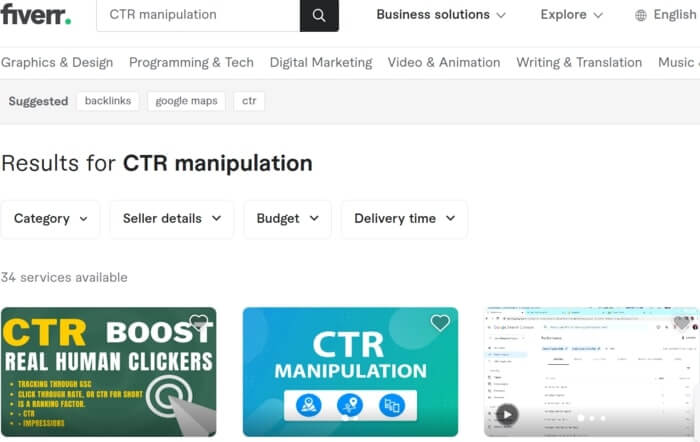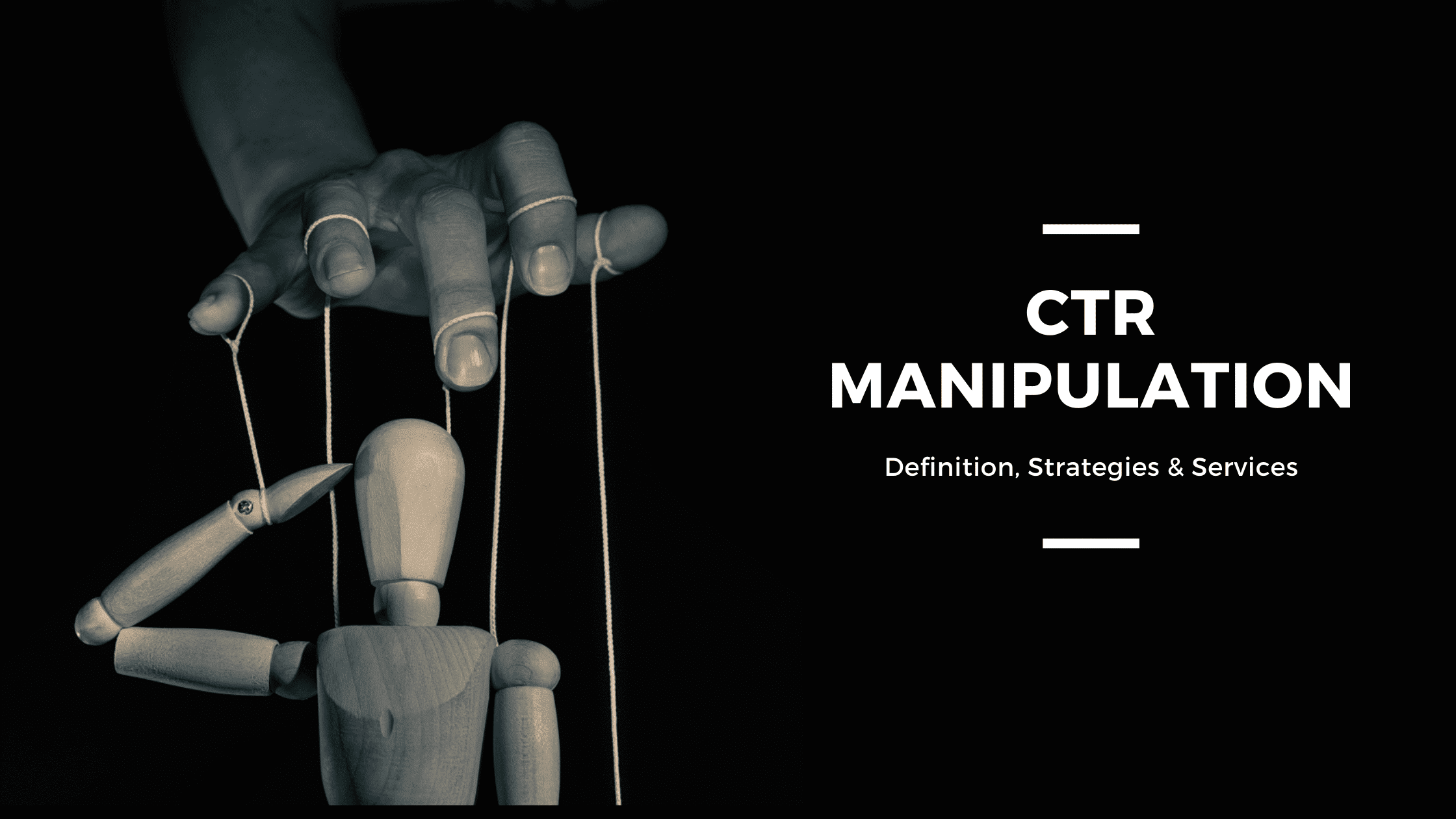Change Your Click-Through Rates with Proven CTR Manipulation Methods
Change Your Click-Through Rates with Proven CTR Manipulation Methods
Blog Article
Maximizing Organic Click-Through Rates With CTR Control
The optimization of natural click-through prices (CTR) is a nuanced venture that pivots on understanding both individual psychology and reliable material discussion. The landscape is swarming with mistaken beliefs and oversimplifications about what genuinely drives CTR.
Comprehending Click-Through Rates
Comprehending click-through prices (CTR) is vital for assessing the performance of online advertising methods. CTR gauges the portion of customers that click a particular web link or advertisement contrasted to the complete number of users who see it. A higher CTR indicates that the content is engaging and pertinent to the target audience, while a lower CTR may signal a demand for optimization.
To compute CTR, split the number of clicks by the variety of perceptions and increase by 100. As an example, if an advertisement receives 300 clicks out of 10,000 impacts, the CTR would be 3%. This metric is critical for evaluating various elements of electronic marketing, including seo (SEO), email projects, and social networks marketing.
Furthermore, analyzing CTR aids marketers identify which strategies generate the very best outcomes and which require refinement. By concentrating on enhancing CTR, companies can boost their content's exposure and efficiency, bring about raised traffic and potential conversions. Comprehending the nuances of CTR is foundational for any kind of marketing professional aiming to enhance their on-line existence and take full advantage of return on financial investment (ROI)

The Psychology of Customer Behavior
User behavior is dramatically influenced by emotional variables that dictate just how people engage with online content. Recognizing these variables is essential for enhancing click-through rates (CTR) in natural search outcomes. Cognitive biases, such as the anchoring result, play a critical function fit customers' assumptions. Their initial impacts can heavily affect their subsequent judgments concerning significance and reliability. when customers experience details.
Emotional responses likewise dramatically effect customer behavior. Web content that resonates psychologically can set off a sense of seriousness or curiosity, triggering customers to click. Additionally, social proof-- such as individual reviews or scores-- can boost count on and urge engagement, as individuals usually want to the actions of others to inform their own decisions.
Additionally, the concept of deficiency can drive clicks - GMB CTR Manipulation. Limited-time deals or special material produce a fear of losing out (FOMO), engaging individuals to act promptly. Understanding these mental chauffeurs makes it possible for marketers to produce even more engaging content that resonates with their target audience
Reliable CTR Adjustment Techniques
Leveraging mental insights can dramatically enhance click-through prices (CTR) with targeted manipulation techniques. One of one of the most efficient methods is the use of engaging headings that stimulate inquisitiveness or seriousness. Phrasing titles as inquiries or integrating numbers can draw in even more attention, triggering users to click.
Another method entails enhancing meta summaries to create a sense of relevance and immediacy. By clearly laying out the solutions or advantages given in the web content, you can involve possible readers and convince them to click. Additionally, utilizing power words-- such as "unique," "proven," or "totally free"-- can boost the charm of your material.
Visual aspects also play a critical role. Integrating attractive photos or thumbnails can attract users in and improve CTR. A/B screening different visuals can assist identify which images resonate best with your target market.
Lastly, guaranteeing that your content guarantees deliverable value results in higher CTR. When users view that clicking will certainly provide them with meaningful insights or solutions, they are more probable to involve. By using these strategies attentively, online marketers can successfully adjust CTR to their benefit while preserving ethical criteria.
Usual Misconceptions Concerning CTR
Several mistaken beliefs surround click-through prices (CTR) that can lead online marketers to make illinformed choices. While a high CTR recommends that more users are clicking, it does not guarantee conversions or sales.
Another typical idea is that CTR is an isolated metric. In truth, CTR should be reviewed along with other performance indications, such as bounce rate and conversion rate, to get an alternative view of campaign success.
Furthermore, some online marketers presume that optimizing for CTR alone suffices. However, concentrating specifically on CTR can result in clickbait methods that may draw in clicks yet fall short to engage individuals meaningfully. This approach can harm brand name reputation and result in reduced retention prices
Finally, there is an idea that CTR techniques are globally reliable. The fact is that optimum CTR techniques can differ dramatically across industries and target audiences, demanding customized strategies for various market sections. Recognizing these misconceptions is vital for developing reliable CTR methods that align with overarching marketing goals.
Measuring CTR Success
Although high click-through prices (CTR) can show effective involvement with why not try this out material, gauging their true success calls for a detailed analysis of several elements. Initially, it is necessary to recognize the context in which the CTR is achieved. For circumstances, a high CTR on a misleading title may not convert to purposeful engagement or conversions, eventually reflecting badly on the brand name's trustworthiness.
Second, examining the resource of website traffic is vital. Organic website traffic from online search engine can represent a robust content technique, while clicks from irrelevant resources may suggest a lack of targeting. Furthermore, gauging the subsequent customer behavior is vital; evaluating metrics such as bounce price, time invested on web page, and conversion rates can give much deeper insights right into the top quality of the interaction launched by check my site the CTR.

Final Thought

The optimization of organic click-through rates (CTR) is a nuanced endeavor that hinges on recognizing both user psychology and reliable content discussion. CTR gauges the percent of users who click on a specific web link or ad compared to the overall number of individuals that watch it. A greater CTR suggests that the web content is involving and relevant to the target audience, while a lower CTR might signal a requirement for optimization.
Concentrating solely more on CTR can lead to clickbait tactics that might attract clicks however stop working to engage customers meaningfully. In addition, determining the succeeding individual habits is essential; analyzing metrics such as bounce rate, time spent on page, and conversion rates can provide deeper understandings right into the high quality of the interaction started by the CTR.
Report this page